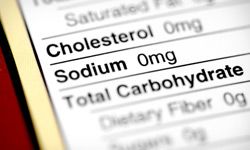Americans seem to like a little food with their salt -- on average, we each consume almost 3,500 milligrams (mg) of sodium every day. Let's put that into context: The American Heart Association recommends we consume no more than 1 teaspoon of salt a day, which equals 2,300 mg of sodium or less. The recommendation drops to 1,500 mg of sodium for people who suffer from or are at risk for developing cardiovascular disease. If you're looking for ways to reduce the amount of sodium in your diet, it's always better to choose unprocessed or minimally processed foods. For example, consider the tomato.
Tomatoes are packed full of potassium and magnesium, but not sodium. In fact, they are a great low-sodium food to add to your diet. But as the tomato becomes more processed, the sodium levels change.
Advertisement
One cup of fresh tomato contains about 10 mg of sodium. Turn that tomato into 1 cup of tomato juice or 1 cup of tomato soup, and the sodium content jumps to about 700 mg. Even worse? One cup of store-bought tomato sauce contains nearly 1,000 mg of sodium, with heart-healthy versions bringing the count down to 720 mg per cup.
Surprised? You'll also be surprised at some of the foods with low (or no) sodium. First surprise food: cheese.
What the Label Means
Reading labels is an important part of choosing what foods you buy and eat. Don't let food labels mislead you, though. Here's what you need to know about sodium content:
- While these may or may not be naturally low-sodium foods, labels claiming no salt added/unsalted mean no salt was added during processing.
- Low-sodium foods contain 140 mg or less per serving.
- Very low-sodium foods contain 35 mg or less per serving.
- Salt-free/sodium-free foods must contain no more than 5 mg per serving.


